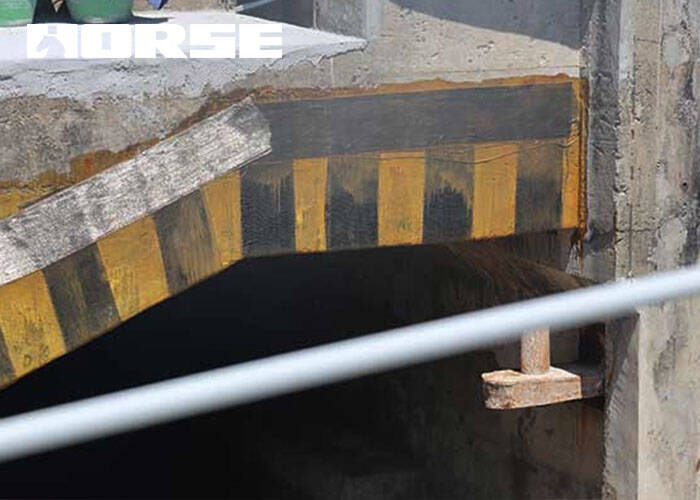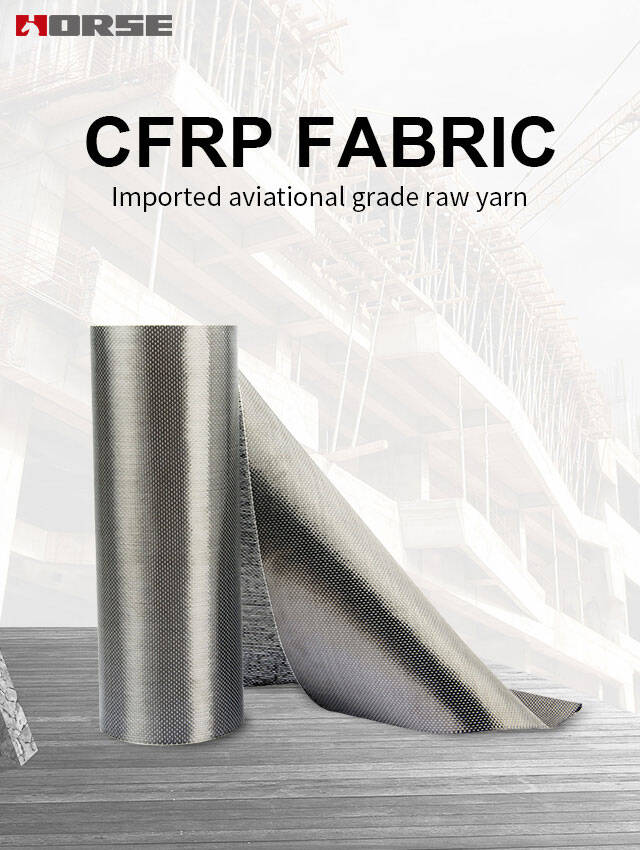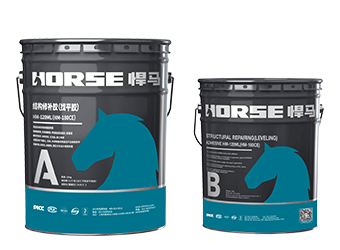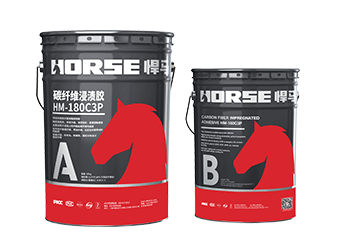Solutions
Horse Construction offers full range of structural strengthening materials with technical supports, documentation supports, products supports, project supports.
Construction Technology and Effect of Carbon Fiber Reinforcement Wharf Concrete

Performace of carbon fiber reinforcement materials
The reinforcement of a wharf uses high-strength grade I carbon fiber cloth with a design thickness of 0.167mm and a unit mass of 300g/m2. Both U-shaped hoop and bead are made of high-strength grade I carbon fiber cloth. Its performance indicators must meet the specification requirements.
The performance index of the adhesive for carbon fiber composite materials must meet the specifications. Do not use unsaturated polyester resins and alkyd resins as impregnating and bonding adhesives. Because beams and pile caps are easily affected by moisture, moisture-curing adhesives that meet the requirements should be used. The positive tensile bond strength with dry surface concrete is ≥2.5MPa, and the failure form of carbon fiber positive tensile bond strength detection should be concrete cohesive failure.
Before the construction of the wharf reinforcement, the materials were witnessed and sampled for inspection, and the material performance test of the Horse brand high-strength carbon fiber cloth was carried out. The results showed that all the indicators were in compliance with the requirements of the specification. Therefore, the construction technology and construction quality will directly determine whether the reinforcement effect can achieve the expected effect of the design, so as to achieve the purpose of reinforcement.
Construction technology of carbon fiber reinforcement materials
The principle of strengthening the concrete components of the wharf is to paste carbon fiber cloth on the surface of the component after the repair of the original component is completed to improve the load-bearing capacity of the beam and slab components and achieve the effect of strengthening the pier. At the same time, the carbon fiber cloth outsourcing the wharf components can protect the original structure from corrosion.
The specific construction process is as follows: load removal → bottom layer treatment → bottom layer resin coating → carbon fiber cloth paste → inspection → surface protection.
1) Unload the load. Before reinforcement, the wharf operation in the construction area should be stopped to ensure that the components are in a non-stressed state to ensure the reinforcement effect.
2) Bottom processing. First, cracks and cracks on the surface of the concrete should be removed and repaired, and the corroded steel bars should be derusted. The repair glue will level the surface of the concrete. Before applying the primer, wash the surface dust and dry it. For the tidal splash area, you can use fire to keep the surface dry before proceeding to the next step of construction.
3) Apply primer resin. It is formulated according to the requirements of the product. The bottom layer glue is evenly coated on the concrete surface. In order to ensure the bonding effect, the carbon fiber cloth should be pasted as soon as possible after the bottom layer resin is cured.
4) Paste carbon fiber. First, according to the width requirements of the design documents, the carbon fiber cloth is cut, and the adhesive glue is mixed according to the preparation ratio of the product description. Then apply the dipping glue evenly on the pasting area, and pay attention to the corners and overlapping parts. The carbon fiber cloth is pasted from one side of the component, and the other side is stretched vigorously, and the brush is repeatedly pressed and swept to avoid the generation of bubbles and make the sizing glue fully soak the carbon fiber cloth. After the surface of the carbon fiber cloth is dry, the next layer should be pasted. Repeat the above steps for multilayer pasting.
5) Inspection. In order to ensure the bonding quality between carbon fiber cloth and concrete, after the bond strength is reached, a carbon fiber drawing instrument can be used to test the carbon fiber cloth positive tensile bond strength. The determination of the corresponding test results can be carried out with reference to the specifications.
6) Surface protection. Pay attention to the protection of the carbon fiber cloth within 24 hours after all construction is completed, to prevent scratches on the reinforced surface, and to prevent moisture. After curing, the surface of carbon fiber should be protected by painting with anticorrosive coating.
7) Precautions for construction of carbon fiber cloth
(1) Before surface treatment and pasting of carbon fiber cloth, the reinforcement position, the width of the carbon fiber cloth and the number of cloth strips should be confirmed. The cloth strip interval should be carried out according to the design requirements.
(2) The bottom resin and bonding glue should be weighed according to the ratio specified in the product instructions and mixed evenly. There must be no oil and impurities in the mixing container. Before construction, a plan should be made to avoid excessive waiting time that will cause the glue to fail and cause waste.
(3) Pasting carbon fiber cloth is a key process in the construction of wharf reinforcement. It must be completed by a professional construction team familiar with the construction process, and should be carefully organized, carefully constructed, and strictly control the construction quality of the process.

Reinforcement effect analysis and suggestions
In the carbon fiber cloth reinforcement construction of a wharf, the bonding capacity of carbon fiber cloth and concrete meets the design requirements, and the sample samples are all concrete cohesive failure.
However, if the old wharf is reinforced and reconstructed, the concrete performance will be significantly reduced. If the carbon fiber positive tensile bond strength is tested, the concrete cohesive failure will occur, but the cohesive force will be low. Therefore, during the actual reinforcement effect inspection process, the actual situation of the building should be used for verification with other inspection methods when necessary.
According to the requirements of the carbon fiber cloth paste position and the number of layers in the design documents, the bending and shear resistance of the wharf are calculated. It is calculated that the flexural and shear resistance of the wharf beams and slabs reinforced with carbon fiber cloth can meet the requirements of the wharf's bearing capacity, which improves the safety and stability of the wharf's overall operation.
Carbon fiber material itself has the characteristics of high strength, high elastic modulus, light weight and good corrosion resistance. When the carbon fiber cloth is pasted, the impregnating glue coated on the surface is modified epoxy resin glue, which has good corrosion resistance and anti-aging properties. After curing, the adhesive layer is wrapped on the surface and inside of the carbon fiber cloth, forming a whole with the concrete structure to bear the force. Therefore, the immersion of carbon fiber cloth and the matching modified epoxy adhesive by seawater will not affect its durability. In order to improve the anti-erosion and anti-wear performance of carbon fiber cloth in the high and low tide of seawater, it is possible to consider painting the surface of the entire reinforced area with an anti-corrosion coating for further protection measures, which can strengthen the protection of the wharf and improve its durability.
You can find anything here you are in need of, have a trust trying on these products, you will find the big difference after that.

High strength, unidirectional carbon fiber wrap pre-saturated to form a carbon fiber reinforced polymer (CFRP) wrap used to strengthen structural concrete elements.

Good thixotropy carbon fiber leveling adhesive for concrete surface repairing

Good impregnation carbon fiber adhesive for applying carbon fiber reinforced polymer(CFRP) wrap for structural strengthening